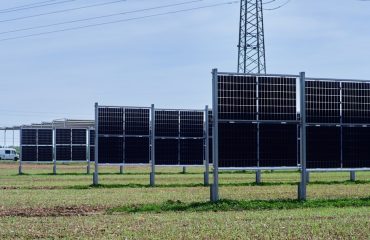In the realm of modern construction, energy efficiency is paramount. Minimizing heat loss and maximizing thermal comfort are key objectives, and the choice of building materials plays a crucial role. Thermally insulated steel profiles are emerging as a significant player in achieving these goals, offering a compelling blend of strength, durability, and superior thermal performance. This comprehensive guide delves into the intricacies of these innovative profiles, exploring their benefits, applications, and future prospects.
Understanding the Mechanics: How Thermal Insulation Works in Steel Profiles
Steel, while incredibly strong, is also an excellent conductor of heat. This means that without insulation, steel structures can contribute significantly to heat loss in buildings, leading to higher energy bills and discomfort. Thermally insulated steel profiles address this issue by incorporating a layer of insulating material within the steel structure itself. This typically involves a core of polyurethane, polyisocyanurate, or other high-performance insulating foams, encased within a robust steel shell. The insulating core acts as a thermal break, significantly reducing the flow of heat through the profile. This principle is crucial in minimizing “cold bridges,” areas where heat escapes rapidly due to uninsulated conductive elements in the building envelope.
Different manufacturing processes lead to variations in the placement and thickness of the insulation core. Some profiles feature a continuous core running the length of the profile, while others may have segmented insulation. The choice of insulation material and its density also impact the overall thermal performance of the profile. High-density insulation generally provides better thermal resistance, but it can also increase the overall weight and cost of the profile.
Superior Thermal Performance: Breaking Down U-Values and Thermal Breaks
The effectiveness of thermally insulated steel profiles is often measured by their U-value (formerly k-value). The U-value represents the rate of heat transfer through a material, expressed in watts per square meter-kelvin (W/m²K). A lower U-value indicates better thermal insulation. Thermally insulated steel profiles boast significantly lower U-values compared to their non-insulated counterparts. This translates to reduced energy consumption for heating and cooling, leading to substantial cost savings over the building’s lifespan.
The incorporation of a thermal break within the profile is key to achieving these low U-values. The insulating core acts as a barrier, preventing the direct transfer of heat between the inner and outer steel surfaces. This is especially crucial in applications where the profile is exposed to both internal and external environments, such as window frames or curtain walls.
Diverse Applications: Where Thermally Insulated Steel Profiles Excel
The versatility of thermally insulated steel profiles makes them suitable for a wide range of applications in the construction industry. Their strength and durability are ideal for load-bearing structures, while their superior thermal performance contributes to energy efficiency. Some key applications include:
- Window and Door Frames: These profiles create energy-efficient windows and doors, minimizing heat loss and improving indoor comfort.
- Curtain Walls: In high-rise buildings and commercial structures, thermally insulated steel profiles form the basis of energy-efficient curtain wall systems.
- Structural Framing: These profiles can be used in various structural applications where both strength and thermal performance are required.
- Cold Storage Facilities: Their excellent insulation properties make them suitable for cold storage applications, minimizing energy consumption for refrigeration.
- Prefabricated Buildings: The use of these profiles in prefabricated construction speeds up the building process while maintaining high energy efficiency.
Manufacturing Processes: A Look Behind the Scenes
The manufacturing process of thermally insulated steel profiles involves several key steps. First, the insulating core is produced, typically by injecting polyurethane or polyisocyanurate foam into a mold. Then, the steel sections are formed, often through roll-forming or extrusion processes. Finally, the steel sections are precisely fitted around the insulating core, creating a complete, thermally insulated profile. The precision of these steps is critical to ensure a high-quality, durable, and thermally efficient final product. Advanced manufacturing techniques ensure the secure bonding of the insulation to the steel, preventing gaps or voids that could compromise thermal performance.
Quality control measures throughout the manufacturing process are essential to maintain consistent thermal performance and structural integrity. Regular testing and inspections are implemented to ensure the profiles meet the required standards and specifications.
The Future of Thermally Insulated Steel Profiles: Innovation and Sustainability
The demand for thermally insulated steel profiles is continuously growing, driven by increasing environmental awareness and stricter building regulations. Ongoing research and development focus on improving the thermal performance, durability, and sustainability of these profiles. This includes exploring new insulation materials with even better thermal properties, developing more efficient manufacturing processes, and incorporating recycled content into the profiles. The future likely holds further innovations in design and manufacturing, leading to even more energy-efficient and environmentally friendly building solutions.
The integration of smart technologies, such as embedded sensors for monitoring thermal performance, is also a promising area of development. These advancements will not only enhance the efficiency of buildings but also contribute to the development of smart, sustainable cities.
SEO Tags: Thermally Insulated Steel Profiles, Steel Thermal Breaks, Energy Efficient Steel, U-Value Steel Profiles, Sustainable Building Materials




